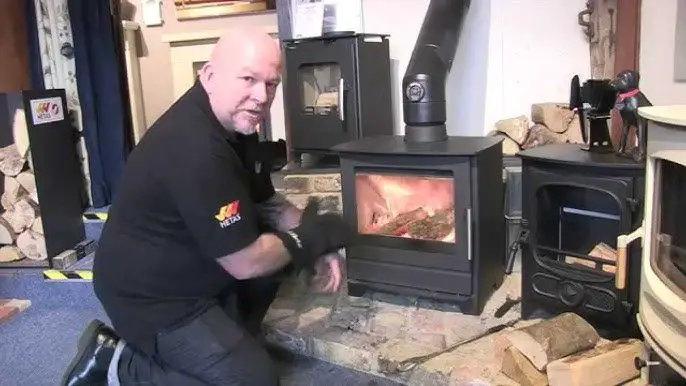What Is The Best Fire Starter For Wood Stoves?
Starting a fire in a wood stove can be challenging, especially if the wood is damp or the flue is cold. Having an effective fire starter is crucial for getting a strong fire going quickly and safely. The best fire starters for wood stoves should ignite easily, burn hot, and help the fire establish and spread to the larger logs.
When choosing a fire starter, there are several factors to consider: safety, effectiveness, cost, environmental impact, and ease of use. The goal is to find an option that balances these factors and reliably lights fires in your specific stove. Key aspects include safety procedures, ignitability, heat output, affordability, sustainability, and convenience. This article will provide an overview of the top options and recommendations for selecting the ideal fire starter for your wood stove.
Safety
When choosing a fire starter, it’s crucial to select non-toxic, non-flammable materials. According to Girl Scouts, campfires present both burn and smoke inhalation hazards, so proper safety precautions are essential (Fire Safety). Avoid fire starters containing dangerous chemicals that can explode or cause flash fires. Opt for starters made from natural materials like wood, cardboard, or wax. Check labels and instructions to ensure the product won’t produce toxic fumes. Store fire starters safely away from heat sources, out of reach of children and pets. Follow all usage directions carefully and supervise children around fires. With the right precautions, fire starters can be used safely.
Effectiveness
When choosing a fire starter, it’s crucial to select one that can quickly and reliably ignite your wood stove or fireplace. Some of the most effective materials for fire starters are those that catch flame easily, like waxes, sawdust, wood chips, and natural fibers like cotton or jute.
According to Outdoor Life, one of the best fire starters for effectiveness is Pyro Putty. This petroleum-based putty lights easily with a spark from a ferrocerium rod or match. It burns hot at 1300°F for up to 5 minutes, providing ample time to catch your kindling on fire.
Gear Junkie recommends Sweetfire firestarter bricks made of sawdust and paraffin wax. Shaving off flakes of the brick into a powder creates an extremely flammable pile that ignites quickly with just a single match. The shavings burn for up to 10 minutes, allowing plenty of time to build the rest of your fire.
Opting for fire starters made of finely divided flammable materials ensures you can swiftly and dependably start a fire in your wood stove or fireplace with minimal effort. Quick ignition and extended burn time are key features to look for in an effective fire starter.
Cost
When choosing the best fire starter for wood stoves, it’s important to consider both the upfront cost as well as the long-term cost per use. According to Amazon, basic cardboard fire starter sticks can cost as little as $5 for a pack of 100, working out to about 5 cents per stick. However, these may need multiple sticks to get a fire going. Long-burning wax and sawdust fire starter logs can cost $1-2 each but burn for up to 2 hours, making the cost per hour much more affordable.
Reusable options like magnesium alloy fire starters have a higher startup cost, typically $10-15, but can be struck thousands of times. This makes the cost per use extremely low over time. Electric fire starter tools can also have high startup costs of $50 or more but offer the ultimate convenience and reuse. Considering the number of times you’ll need to start a fire, reusable tools often provide the best value despite higher initial purchase prices. Focus on quality over quantity, as cheap fire starters that take multiple tries to light a fire often cost more in the long run. Look at customer reviews to determine real-world ease of use.
Environmental Impact
When choosing a fire starter, it’s important to consider the environmental impact of the materials used. According to a University of Colorado Boulder report, fire can significantly influence naturally occurring emissions. Using natural, biodegradable materials is best to minimize the release of harmful chemicals into the atmosphere.
Avoid fire starters containing chemicals that can produce toxic fumes when burned, such as petroleum-based products. Some chemical fire starters contain methanol, petroleum distillates, isopropyl alcohol, and other ingredients that are not eco-friendly. Opt for materials like wood, wax, or vegetable fibers instead.
According to research from Ezéchiel (2023), fire starters made from sawdust and vegetable oils are more ecological options. They produce less indoor air pollution. Look for sustainable, non-toxic products to reduce your environmental impact.
Ease of Use
When selecting a fire starter for your wood stove, ease of use is an important factor to consider. You want a starter that ignites quickly and reliably with minimal effort. According to Gear Junkie, products like the Bernzomatic Trigger-Start Torch make lighting a fire incredibly easy with the push of a button. Meanwhile, starters like magnesium fire steels require more dexterity to generate sparks.
You’ll also want to think about whether you need quick ignition or a longer burn time. Spark-based starters like ferrocerium rods provide a fast, hot spark for quick ignition, but don’t offer a sustained burn. In contrast, products like fire paste, wood wool, and fatwood burn slowly and consistently for up to 15 minutes to thoroughly ignite your wood. Consider when and how you’ll be starting fires to determine whether a quick or slow burn works best.
Overall, opt for starter products that are simple and intuitive to use. Quick-lighting options like the Trigger-Start Torch make the process frustration-free, while products with multiple steps or components can slow you down.
Storage
When it comes to storing fire starters, you’ll want to consider their shelf life and storage requirements. Some starters like matches or lighter fluid can evaporate or degrade over time, while others like fatwood or firestarter blocks are very stable for long term storage.
Fatwood sticks made from pine resin are an excellent choice for a fire starter with a long shelf life that requires minimal storage precautions. The resin soaked wood is naturally water resistant and concentrated with flammable compounds. Fatwood can retain its fire starting capabilities for well over a year when stored properly. Simply keep the sticks somewhere dry and away from extreme temperatures (Source).
Firestarter blocks made of sawdust and wax are another starter that won’t degrade when stored in a dry location at moderate temperatures. The blocks can have a shelf life of 5 years or longer before losing their effectiveness. Avoid storing them near heat sources like hot water tanks or furnaces (Source).
On the other hand, match sticks can lose their ability to ignite if stored in humid conditions or exposed to temperature swings. Butane lighters or lighter fluid may evaporate or degrade over time as well. For maximum reliability, choose fire starters like fatwood or firestarter blocks that retain their fire starting capabilities over many years when stored properly.
Types of Fire Starters

There are several common types of fire starters used for wood stoves, each with their own pros and cons:
Wax and Sawdust Fire Starters
These fire starters are made of wax mixed with sawdust or wood shavings, often pressed into blocks or logs. According to Amazon, they are very effective at catching and spreading flame quickly. The wax helps the fire starter burn hotter and longer. However, some find the petroleum smell of the wax unpleasant.
Compressed Wood Chip Fire Starters
Compressed wood chips, like those from Lowe’s, are made by compressing wood shavings with some paraffin wax. They light easily and burn cleanly without odor. However, they may not burn as long or hot as wax and sawdust starters.
Solid Wood Fire Starters
Pieces of solid, quick-burning woods like pine, aspen, or cedar can be used as fire starters in wood stoves. According to Northline Express, these create a hot flame quickly. Hardwoods may burn longer. The drawback is sourcing and preparing the right wood pieces.
Paper Fire Starters
Balls of newspaper or even paper egg cartons soaked in wax or paraffin can act as effective, inexpensive fire starters. They light easily and burn well. However, the paper ash residue may be messy. Some also find them inconvenient to prepare.
Recommendations
Based on research, the top fire starters for wood stoves are:
1. Superior Trading Co Light a Fire – This fire starter is made from fatwood and paraffin wax, making it waterproof and able to start fires even in wet conditions. The tight grain of the fatwood allows the starter to burn slowly and steadily for up to 15 minutes, giving plenty of time to build a larger fire.
2. UCO Stormproof Match Kit – The UCO Stormproof kit contains 25 windproof and waterproof matches that can light even when wet. The matches burn for up to 15 seconds, allowing time to ignite kindling. The waterproof case keeps matches dry in any conditions.
3. FireFlame Emergency Fire Starter – This compact fire starter contains a flint rod and striker that throws 3000 degree sparks to easily ignite tinder. It also includes a whistle and small knife for survival situations. The compact size makes it ideal for camping, hiking, or emergency kits.
4. Coghlan’s Flint Striker – This inexpensive fire starter contains a flint rod and metal striker in a durable ABS plastic case. Users can strike the rod at different angles to direct sparks exactly where needed. It produces hot sparks even when wet.
5. Zippo Emergency Fire Kit – This kit contains a windproof/waterproof Zippo lighter, flint wheel, waxed tinder sticks, and a razor knife. The waxed tinder is ideal for catching sparks, while the reliable Zippo lighter ensures ignition, even in the wind or rain.
When choosing a fire starter, key factors are reliability, ability to work when wet, burn time, and sparks hot enough to easily ignite tinder and kindling. The options above are top-rated for their effectiveness and ease of use in all conditions.
Conclusion
When choosing the best fire starter for your wood stove, there are several key factors to consider. Safety and effectiveness should be your top priorities – opt for a starter that will ignite quickly and burn steadily without releasing any toxic fumes. Cost and ease of use are also important, as you want an affordable starter that is simple to light and apply. Carefully weigh the environmental impact as well, since some starters contain harmful chemicals.
Having a reliable fire starter on hand is crucial for successful wood stove operation. The ability to easily start and maintain a robust fire ensures you can heat your home efficiently all season long. Taking the time to select the right fire starter will provide peace of mind that your stove will ignite whenever needed, keeping your house warm even on the coldest winter days.


